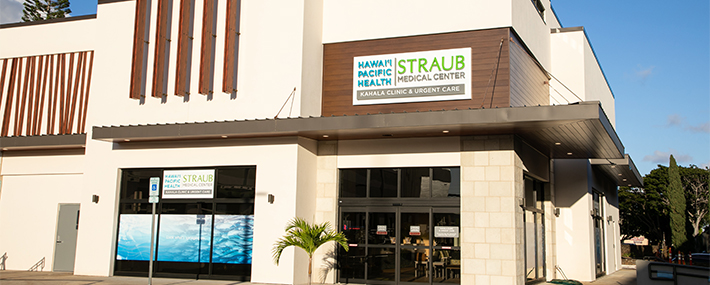Specialist Guidance on Navigating Clinic Options for Urgent Care
Specialist Guidance on Navigating Clinic Options for Urgent Care
Blog Article
The Importance of Urgent Care Centers in Linking the Gap Between Key Care and Emergency Situation Services
Immediate care facilities have actually become a vital component of the healthcare landscape, effectively addressing the important demand for instant clinical focus without turning to emergency situation services. By offering look after non-life-threatening problems, these centers assist to reduce the concern on emergency clinic and improve individual access to timely therapy. Their expanded hours and varied services provide to an expanding populace seeking alternatives to traditional key treatment. Nevertheless, the advancing duty of urgent treatment facilities increases essential concerns about their assimilation within the broader medical care system and the implications for patient outcomes and resource allotment.
Summary of Urgent Treatment Centers
Urgent treatment centers have actually ended up being an important part of the healthcare distribution system, offering accessible clinical services for non-life-threatening conditions. These centers normally operate outdoors conventional office hours, offering patients an alternative to emergency spaces and key care settings. Clients seeking immediate treatment usually present with problems such as minor injuries, infections, or ailments that need prompt attention yet do not pose an immediate threat to life or limb.
Urgent care centers are staffed by a variety of healthcare experts, consisting of medical professionals, registered nurse professionals, and medical professional aides, that are equipped to identify and treat different clinical concerns. They frequently include analysis tools such as X-ray devices and lab services, allowing them to supply extensive care on-site.
The establishment of immediate treatment centers has actually been affected by the raising need for prompt clinical solutions in a busy culture, where individuals might battle to safeguard consultations with primary care carriers. As a result, these centers aim to ease congestion in emergency divisions, enhancing general medical care effectiveness. Additionally, urgent treatment centers often serve as a bridge in between main care and emergency situation solutions, ensuring that people get suitable treatment customized to their specific clinical requirements.

Benefits of Urgent Care Services
Accessing timely medical care is a considerable benefit of urgent treatment solutions. These centers supply prompt interest for non-life-threatening conditions, effectively lowering delay times compared to conventional emergency situation divisions. People looking for treatment for minor injuries, diseases, or immediate health and wellness concerns can obtain therapy without the lengthy hold-ups commonly related to health center sees.
Another secret advantage is the extensive hours of procedure. Many urgent treatment centers are open evenings and weekends, fitting people who might not be able to see their health care service provider during typical workplace hours. This adaptability makes immediate treatment an accessible option for those with active schedules or sudden wellness issues.
Additionally, urgent care centers frequently supply a variety of solutions, including diagnostic screening, X-rays, and fundamental laboratory services. This detailed method permits quick medical diagnosis and therapy, boosting individual complete satisfaction.
In addition, immediate treatment centers are commonly more cost-effective than emergency areas, making them an attractive alternative for people without insurance or those with high-deductible strategies. On the whole, immediate care services play an important function in offering easily accessible, prompt, and budget-friendly medical treatment.
Contrast With Health Care
Commonly, patients typically consider their choices between immediate care centers and medical care carriers when looking for medical attention. Both serve important roles in the healthcare system, yet they differ significantly in scope, availability, and expense.
Health care service providers are typically the very first point of call for patients, concentrating on lasting health administration, preventative care, and chronic illness monitoring. They provide connection of care, promoting a patient-provider partnership that permits for thorough wellness assessments and tailored treatment plans. Arranging an appointment can be time-consuming, commonly requiring days or weeks in breakthrough. Urgent Care.
In contrast, urgent care centers offer instant treatment for non-life-threatening conditions that need timely focus, such as minor injuries or infections. These centers frequently run beyond standard workplace hours, accommodating clients that might not have the ability to see their medical care copyright throughout original site regular service times. Furthermore, urgent care is usually extra cost-efficient than emergency clinic brows through, making it an appealing alternative for those with minimal healthcare access.
Eventually, while immediate care facilities and medical care companies both add to person health and wellness, they accommodate distinctive demands, making it essential for clients to figure out which option ideal aligns with their scenarios.
Emergency Situation Providers Communication
The interaction between immediate treatment facilities and emergency situation services is an important aspect of the healthcare landscape, particularly when individuals encounter circumstances that may escalate in seriousness. Immediate care facilities serve as a bridge in between medical care and emergency situation departments, addressing non-life-threatening problems that call for immediate interest. This collaboration improves person results and enhances resource allotment within the healthcare system.
When individuals provide with immediate but not life-threatening concerns, urgent care facilities can successfully manage their needs, easing blockage in emergency situation spaces. Facilities outfitted with diagnostic abilities can help with timely references to emergency services when an individual's condition goes beyond the scope of immediate care treatment. This seamless communication helps guarantee that patients obtain the ideal degree of treatment without unneeded delays.
Additionally, effective communication between immediate care service providers and emergency situation services is crucial. Sharing person info and therapy backgrounds promotes collaborated treatment, lessening the danger of redundant tests and procedures. As healthcare remains to evolve, the vibrant partnership in between immediate care facilities and emergency situation solutions will certainly play a crucial role in enhancing client care effectiveness, fulfillment, and overall wellness results within the community.
Future of Urgent Treatment Facilities
As health care demands advance, the future of urgent care facilities is poised to end up being increasingly integral to the general medical ecological community (Urgent Care). These centers are likely to increase their roles by integrating innovative innovations, such as telemedicine, expert system, and digital health and wellness document integration. This will boost patient accessibility and enhance treatment sychronisation in between urgent treatment, main care, and emergency solutions
Furthermore, urgent treatment centers are expected to diversify their solution offerings to consist of preventative treatment and persistent disease management. This shift will position them as essential parts in managing population wellness, decreasing the burden on emergency situation divisions, and dealing with gaps in primary treatment accessibility.
The growing fad of value-based treatment will further increase the makeover of urgent treatment facilities, prompting them to concentrate on client outcomes and satisfaction. Facilities might likewise embrace collaborative technique versions, functioning carefully with experts and medical care suppliers to make sure comprehensive client management.
Verdict
To conclude, immediate care facilities serve a crucial feature in the medical care system by providing immediate access my response to therapy for non-life-threatening problems, efficiently relieving stress on emergency services. Their expanded hours and varied variety of these details solutions enhance individual comfort and contentment, while additionally making sure proper treatment distribution. As medical care requires proceed to develop, the role of immediate care facilities will likely become progressively considerable, more linking the gap between medical care and emergency situation services.
The facility of urgent care facilities has been influenced by the increasing demand for prompt medical services in a busy society, where patients might have a hard time to safeguard visits with key care companies. In addition, immediate treatment facilities commonly serve as a bridge in between primary treatment and emergency situation services, guaranteeing that people receive appropriate care tailored to their specific medical requirements.
Many immediate treatment centers are open nights and weekend breaks, accommodating clients who may not be able to visit their key care company during standard workplace hours (Urgent Care). As healthcare proceeds to develop, the vibrant connection between urgent treatment centers and emergency situation services will play an essential duty in boosting individual treatment performance, fulfillment, and total health and wellness end results within the community

Report this page